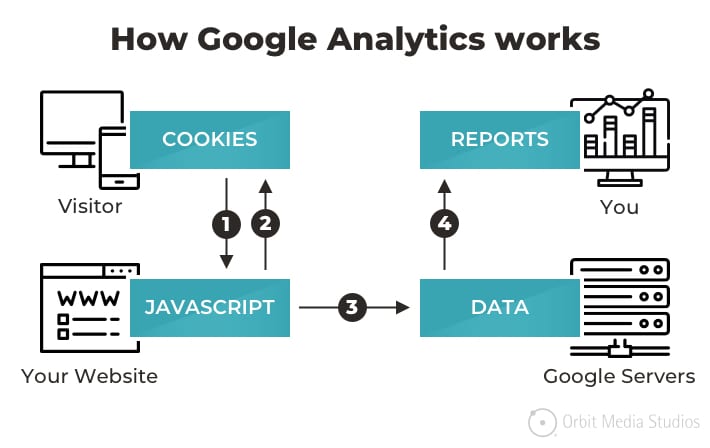When Does the Google Analytics Tracking Code Send an Event Hit to Analytics? A Deep Dive into Customer Interactions
Master Site Insights With Accurate Google Analytics Monitoring Code
The effective application of Google Analytics hinges on the precise application of its tracking code, a basic step often forgotten by site owners. What are the usual risks that could undermine your monitoring initiatives, and exactly how can you ensure precision in your approach?
Recognizing Google Analytics Basics
Google Analytics is an essential device for website owners and marketers, offering invaluable insights into user actions and website performance. At its core, Google Analytics collects information concerning site visitors to an internet site, enabling individuals to examine metrics such as traffic resources, individual engagement, and conversion prices. Comprehending these principles is important for enhancing a website's performance and boosting customer experience.
The system employs cookies to track communications, recording data such as web page sights, session durations, and bounce prices. This details is aggregated and provided via adjustable dashboards, allowing users to visualize patterns in time. Key performance indications (KPIs) can be checked, such as the complete variety of users, brand-new versus returning visitors, and the geographic circulation of the audience.
In Addition, Google Analytics provides division features, enabling customers to separate details web traffic sources or customer demographics for more targeted analysis. By understanding these fundamental components, website owners can make informed decisions concerning web content technique, marketing campaigns, and overall site enhancements. Inevitably, comprehending Google Analytics essentials is crucial for leveraging information to drive growth and accomplish company goals efficiently.
Establishing Up Your Monitoring Code
Copy the offered monitoring code and paste it right into the HTML of your internet site. Preferably, this code should be placed in the header section of every page you want to track. This makes sure that the monitoring code tons prior to any other content, allowing it to capture information accurately. If you are utilizing a material management system (CMS) like WordPress, there are plugins offered that streamline the integration process.
After setup, verify that the monitoring code is functioning correctly by utilizing Google Tag Aide or the Real-Time reports in Google Analytics - when does the google analytics tracking code send an event hit to analytics?. This step is necessary to validate that your information collection is accurate and energetic, setting the structure for informative evaluation
Usual Monitoring Code Issues
Many website proprietors run into common problems with their Google Analytics tracking code that can impede information collection and analysis. One common issue is incorrect installation. This might happen when the tracking code is put in the wrong section of the internet site's HTML, commonly resulting in incomplete or missing information. Additionally, having numerous circumstances of the monitoring code on a single page can cause filled with air metrics, as customer interactions could be counted a lot more than once.
Another concern emerges from using advertisement blockers, which can prevent the tracking code from carrying out entirely, hence skewing browse around this site information. when does the google analytics tracking code send an event hit to analytics?. Additionally, failure to configure filters appropriately can result in the exemption of necessary traffic resources or the addition of unwanted referral spam, distorting the information gathered
Internet site proprietors might additionally overlook the relevance of tracking code updates, particularly when moving to Google Analytics 4 (GA4) from Universal Analytics. Finally, not enough testing prior to releasing adjustments can result in unseen errors in the tracking code, better making complex information integrity. Attending to these common concerns is important for making certain exact tracking and informative analytics.
Analyzing Website Information Effectively
Exact information collection is only the very first step in leveraging Google Analytics; the real worth depends on successfully examining that data to drive informed decision-making. To achieve this, it is important to identify crucial performance signs (KPIs) that align with your service goals. Focus on metrics such as conversion prices, customer interaction, and web traffic sources, as these will certainly offer insights right into customer actions and the total performance of your website.
Utilizing Google Analytics' segmentation functions enables for a deeper understanding of your audience. By damaging down data into particular demographics, habits, and traffic networks, you can uncover patterns and patterns that educate targeted techniques. Implementing customized records and control panels can improve this process, making it possible for fast accessibility to important data.
In addition, consistently assessing information trends in time aids to recognize abnormalities and opportunities for improvement. Use visualization tools to present information in a quickly digestible format, helping with a lot more efficient communication with stakeholders. Eventually, the ability to evaluate web site information effectively empowers companies to make critical decisions that enhance user experience, optimize advertising initiatives, and drive development.

Finest Practices for Accurate Monitoring
Executing efficient tracking techniques is vital for acquiring trustworthy information in Google Analytics. To make sure precise tracking, start by appropriately mounting the Google Analytics tracking code on every page of your website. This can be achieved via a tag manager or by straight installing the code right into the HTML.
Following, configure your Google Analytics account to exclude inner traffic. This can be done by establishing filters that determine and get rid of sees from your organization's IP address, consequently stopping manipulated information. Additionally, make use of look these up event tracking to monitor specific customer communications, such as downloads or video clip plays, which basic page sights may neglect.
Frequently investigate your tracking arrangement to verify that all features, such as goals and ecommerce tracking, are working effectively. Develop a constant naming convention for your campaigns and events to facilitate simpler reporting and analysis.
Last but not least, think about leveraging UTM criteria for projects to get understandings into the performance of different marketing initiatives. By complying with these best methods, you can boost the precision of your information collection and analysis, eventually causing more educated decision-making for your site.
Final Thought
By making sure the tracking code is correctly positioned and regularly examined, internet site owners can record crucial individual communication information, thus assisting in the identification of vital performance indications. Eventually, a robust monitoring structure boosts the capability to drive interaction and boost general site performance.

Not enough screening before launching changes can result in unnoticed errors in the tracking code, even more complicating data dependability.Implementing reliable tracking techniques is important for acquiring dependable data in Google Analytics. By ensuring the tracking code is properly positioned and frequently examined, web site owners can catch vital individual interaction data, hence promoting the identification of vital performance indicators.